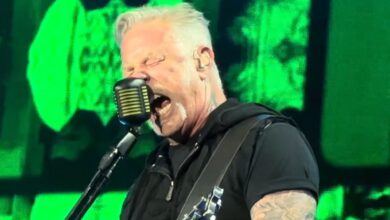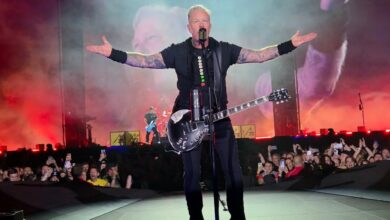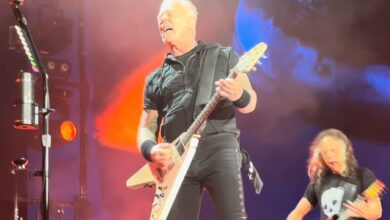Black Sabbath’s Live Aid Performance Footage Released After 40 Years—Fans Praise “Children of the Grave” as the Best Live Version
When music historians recount the seismic impact of Live Aid, the charity concert held on July 13, 1985, Black Sabbath’s short but historic reunion in Philadelphia often stands out as one of the event’s most talked-about moments. While Queen’s legendary set at Wembley is frequently cited as the definitive Live Aid performance, Black Sabbath’s reappearance with their classic lineup at JFK Stadium carried its own powerful weight—both for fans of heavy metal and for the band’s turbulent history.
For years leading up to Live Aid, Black Sabbath’s founding members—Ozzy Osbourne, Tony Iommi, Geezer Butler, and Bill Ward—had not performed together. Ozzy had left the group in 1979, launching a successful solo career, while Sabbath underwent several lineup changes and experimented with different vocalists, including Ronnie James Dio and Ian Gillan. The announcement that the original quartet would reunite for Live Aid was met with surprise and excitement, not least because there had been years of reported acrimony between Ozzy and his former bandmates.
What’s lesser known is that the idea for the reunion was largely driven by the event’s spirit of charity and unity. Bob Geldof’s personal outreach and the global significance of the concert persuaded the members to put aside past differences, if only for a day. This temporary truce was more than just for show—despite tensions and minimal rehearsal, all four original members agreed to perform together in support of famine relief in Africa.
Black Sabbath’s set in Philadelphia was brief but intense. The band played three songs: “Children of the Grave,” “Iron Man,” and “Paranoid.” All three were classic cuts from their early ‘70s heyday, chosen for their crowd-pleasing energy and enduring popularity. In just under 15 minutes, the band reignited the raw chemistry that had made them pioneers of heavy metal a decade and a half earlier.
One little-known fact is that the reunion was nearly derailed at the last minute. According to accounts from those close to the band, technical issues during the soundcheck and a lack of rehearsal time made the group nervous about performing live before such a massive audience. Ozzy and Tony Iommi reportedly argued backstage over song arrangements, but when the cameras rolled, professionalism and adrenaline won out, delivering a set that thrilled the crowd and millions watching worldwide.
The reaction at JFK Stadium was electric. Fans, many of whom had never seen the original Black Sabbath lineup perform live, erupted as the first thunderous riffs of “Children of the Grave” echoed through the venue. Ozzy prowled the stage in his signature style, hair flying and arms raised, while Iommi, Butler, and Ward provided the crushing wall of sound that defined Sabbath’s early years.
What’s often overlooked is the influence this brief reunion had on future collaborations. While Black Sabbath would not reunite officially with Ozzy until years later, the Live Aid performance planted a seed that eventually led to further collaborations, including the band’s induction into the Rock & Roll Hall of Fame and the recording of their final studio album “13” decades later.
Interestingly, the Live Aid set was not without flaws. Audio glitches, including feedback and uneven mixing, were apparent to those in the crowd and viewers at home. Yet, for many fans, the rawness of the performance added to its authenticity—proof that, even with technical imperfections, the band’s magic was undeniable.
Behind the scenes, the atmosphere among the band members was reportedly tense but focused. Interviews from the period reveal that while old wounds were not fully healed, the urgency and cause of Live Aid inspired the members to channel their energy into the performance. Afterward, the members went their separate ways, but the door had been left open for future reconciliations.
In the years since Live Aid, Black Sabbath’s 1985 reunion has gained near-mythic status among metal fans. While their three-song set was a mere blip in the marathon event, it reminded the world of Sabbath’s foundational place in heavy music history. The performance stands as both a tribute to what the band accomplished in their early years and a testament to the enduring power of music to bring even the most unlikely people together for a cause greater than themselves.





